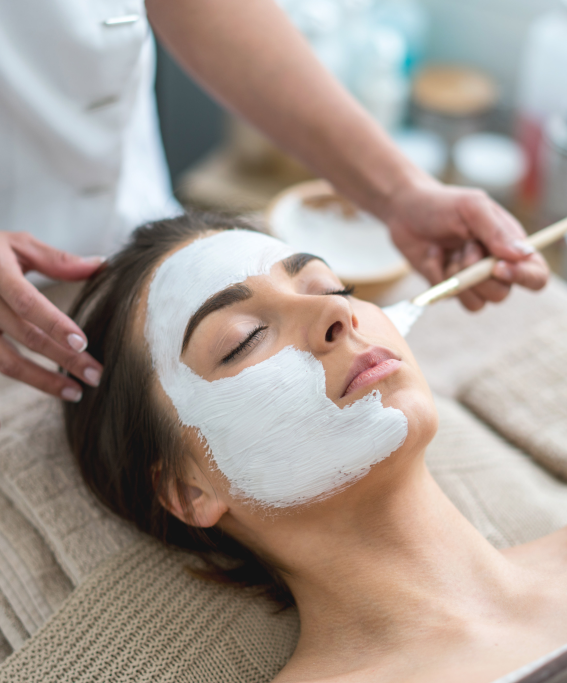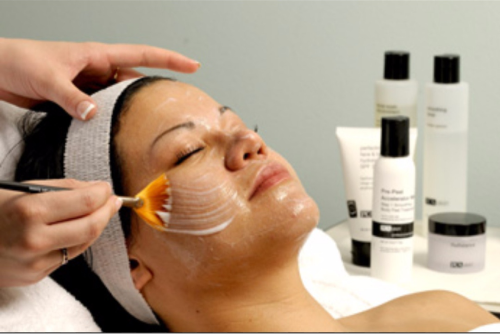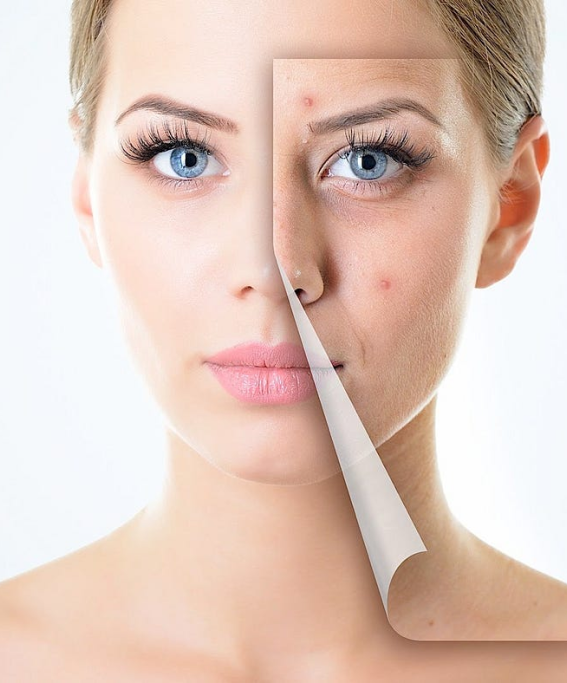What are the results of the chemical peel permanent?
You will, of course, continue to age following your chemical peel. However, you will be starting with virtually new skin, so you have set the aging process back somewhat. Taking great care of your skin going forward will also maximize the benefits of your chemical peel, as will limiting sun exposure, quitting smoking, and limiting your alcohol intake.
Microdermabrasion
What is microdermabrasion?
Microdermabrasion is an effective, non-surgical way to get rid of acne scars, fine wrinkles and sunspots by exfoliating the top layers of the skin. No chemicals or laser beams are used, only aluminum oxide micro crystals that gently sandblasts your skin, leaving it smooth and fresh. Microdermabrasion also stimulates collagen production, helping your skin rejuvenate faster than normal.
What does microdermabrasion involve?
Your skin is first cleansed with a special cleansing gel or alcohol.. The aluminum oxide micro crystal flow is sandblasted through a small tube pressed against the skin. The tube also vacuums back dead skin cells and used micro crystals. After microdermabrasion, your skin is soothed with a special nourishing sun blocking cream, allowing you to go back to your daily routine immediately after treatment.
How much time does microdermabrasion require?
A typical microdermabrasion face treatment takes between 20 and 30 minutes. However, if you want your neck or other parts of the body treated, it may last up to an hour.
Is microdermabrasion suitable for me?
If the goal is to get rid of superficial acne scars, blotchy skin, large pores, age or sun spots, fine wrinkles or uneven skin tone and texture, you are a perfect candidate for microdermabrasion. All skin types and colors can be treated with microdermabrasion. However, talk to a specialist about your medical history because there are conditions such as rosacea which may make microdermabrasion unsuitable for you.
What can microdermabrasion do for me?
Microdermabrasion helps reduce fine lines and wrinkles, fight acne and remove acne scarring, even skin tone, diminish white and black heads, minimize large pores and revitalize dull skin. Microdermabrasion helps skin regeneration by increasing its elasticity and collagen production. The skin looks fresh and feels smooth as soon as treatment is over. With micro abrasion, there is no recovery time and no discomfort.
How many treatments are required?
Your skin care specialist will give you a rough idea of the number of microdermabrasion treatments needed for best results. Major changes are obvious after the fifth session, even though most patients say they observed improvements after the first two. Generally 6 to 8 microdermabrasion treatments, scheduled around two to three weeks apart are recommended so the skin has time to recover between sessions. After the recommended number of sessions, you may have to schedule another abrasion once every two or three months, to maintain the effects.
How do I prepare for microdermabrasion?
One of the advantages of microdermabrasion is minimum pre-treatment requirements. No pre-medication is needed but you may be asked to stop using aspirin-based medicines, Retin-A, Renova, Differin or glycolic acid products. You should not have any waxing, laser treatments or excessive sun exposure at least a week prior to treatment.
How soon can I return to work?
You can return to work the minute you leave your doctor’s office. If your skin looks reddish, as in mild sunburn, you can cover it up with sunscreen and light makeup.
Is there maintenance treatment after microdermabrasions?
After a complete series of microdermabrasion treatments, you may want to keep your skin looking smooth and younger by scheduling a microdermabrasion-maintenance session once every 3 months. Microdermabrasion can be combined with sunscreen and a good skin care regiment to minimize acne, pigmentation issues, and aging.






